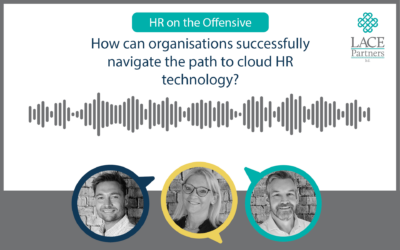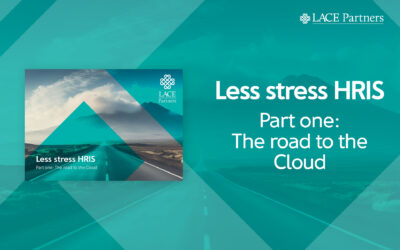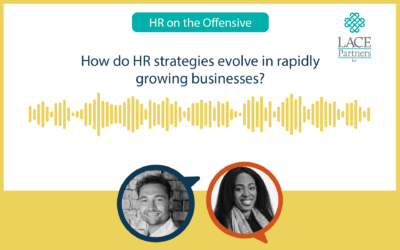Why does the Chief People Officer (CPO) need to operate with two distinctive ‘hats’? What are those ‘hats’ and how important is it to get the balance right? In a recent discussion at LACE HQ, Cathy Acratopulo and Debbie Mitchell two of our people strategy experts talked through what this means and how it impacts every CPO and their ability to drive business and employee value.
The functional leader hat
The first CPO hat that we’re talking about is that of accountability for the HR function itself: making sure the function provides great HR services to the business, manages risk, recruits and develops great talent, runs payroll, etc. This is all about the effective management of the end-to-end employee lifecycle – from initial attraction and onboarding, progressing through the business and ultimately when employees leave. It’s about ensuring policies and best practices are in place, and that the function provides its services in the most efficient and effective way possible to enable compelling employee experiences that match up to the promises of the employee value proposition.
As the CPO, you are accountable for making this happen. And you are where the buck stops if things aren’t working.
The people leader hat
As a member of the c-suite, the second hat that a CPO must wear as a critical part of their role is to be the leader of the people aspect of the business. If you think about the overall workforce as a critical asset, you are there to make sure that that asset is well managed and delivers optimum value for the organisation. You are the one charged with answering two critical questions:
- What are the people outcomes we need to achieve to deliver our business goals?
- Are we focused on the right things to achieve the people outcomes?
That requires a different, wider perspective than the functional hat. The people outcomes relate to organisational-wide accountabilities such as the experience each employee has of working for an organisation, employee productivity and employee engagement. The influences on these outcomes are much wider than just the HR or People function. For example, we know the physical and digital workspace has a huge impact on an employee’s experience of work, but the accountability for these areas may rest with functions like Facilities or IT. Similarly, we all know the impact our line manager can have on whether we enjoy work or achieve our best each day. The HR function has responsibility for enabling people managers to be confident and capable at getting the best out of their teams, but business leaders also have accountability for making this happen.
Ultimately, the CPO’s role here is to champion the achievement of the target people outcomes, collaborating across the business and C-suite stakeholders to drive commercial value.
The CPO role has these two hats – one which is a broader leader related to all things people and one is a functional leader ensuring that the HR function itself is running well to ensure we have the right people with the right skills doing the right job at the right time, in the right place.
Are you obsessing about your people at c-suite level?
Early in 2023 we ran a dinner with a variety of CPOs from different shapes and sizes of business – from medium and large through to very large multinationals. The one question we kept asking was “who is accountable for employee experience?”
It proved difficult on the night to achieve a consensus.
You may not think that you are accountable for some parts of the employee experience. But, when you think about what needs to change, the CPO is the one person at the c-suite with the ability to look holistically across all aspects relating to people; the one person who needs to obsess about “what it feels like to work here”. The CPO needs to be thinking, challenging and asking the critical question:
“Are we achieving the best value from – and for – our people?”
Similarly, that doesn’t mean that that as a CPO you are accountable for the productivity and engagement of the whole workforce. But, in asking the question above, you are the one leader who is focused on understanding what is driving or limiting productivity and engagement. And then working across the business to solve for the challenges you have identified.
If you believe that as a CPO you wear a hat that is focused on the overall people agenda for the business, even though it’s not your functional responsibility, you are more likely to have the mindset that you are there to own the overall experience.
In your functional role, you will own some of the levers needed to shift the dial. Your function can also own the measurement of a set of People KPIs that will show the business how things are progressing.
This is where the CPO is there to take the space, where an opportunity exists and is where the CPO can differentiate themselves within the c-suite. This is where the USP for the Chief People Officer can be forged. But the key question that needs to be asked is whether the CPO has the bandwidth to be able to think about people experience and obsess over it. Because if they wear the ‘functional’ hat too much / well (to stretch out the metaphor), then the danger is that nobody within the business truly ‘owns’ the people questions.
What is the right balance between the two hats?
When it comes to getting the balance right between the two ‘hats’ and how you spend your time as Chief People Officer, different levels of company and functional maturity will influence the decision, including company size. After all, managing the people aspects of a 100-person business is very different to that of a 100,000-person business, isn’t it?
If the HR function is still in development, you may be experiencing several ‘hygiene factor’ issues. As a result, you are likely to be focused on getting the basics right: fixing recruitment, putting in place critical skills training, making sure employees are paid accurately, etc. If the basics aren’t working, they will naturally take precedence otherwise there will be too much organisational ‘noise’ to focus on anything else!
But the requirement to be obsessing over the people experience remains the same regardless of whether you are working in a small charity business, or a FTSE100 organisation; the difference is the level of accountability.
But that is part of the challenge that every CPO faces; there will be ebbs and flows and sometimes one hat may be placed to one side, but it will never truly disappear and both hats should always remain in focus for the CPO.
How do you balance your two Chief People Officer hats? Do you think you get it right? Could you do with a critical friend to help you define your approach for the benefit of your business?
Reach out to us for a chat.






